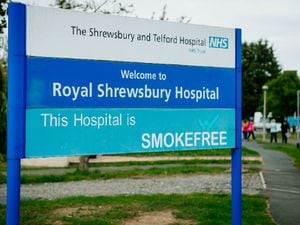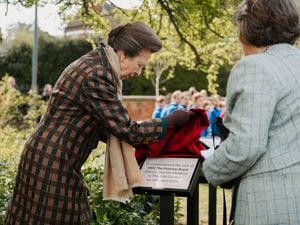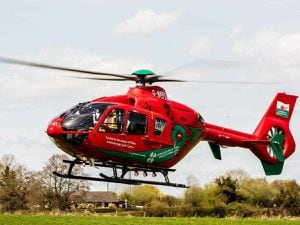Flashback to November 2000 and when flooding peaked in Shrewsbury
There comes a point when things can get no worse.
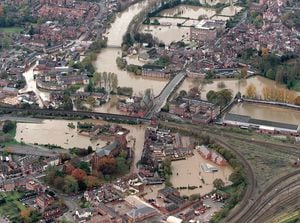
For Shrewsbury the lowest point was the highest point, the day when water levels peaked in the town in the great millennium floods of 2000.
Arguably though things did get worse, as these things are as much about psychological impact as river levels, and although the River Severn did not rise again as high as it did on November 1, a new wave of severe flooding weeks later, just as businesses and residents were cleaning up and trying to get their lives back in order, was heartbreaking.
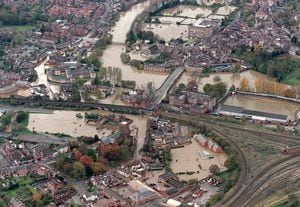
Today flood barriers protect the town centre so it would need the most extreme of what we nowadays like to call extreme weather events to see a repeat of the misery of 21 years ago.
Historically there have been occasions in which the River Severn has risen so rapidly that it has taken residents by surprise, so at least in the autumn of 2000 folk had fair warning as the crisis developed over several days. By the end of October Shrewsbury was under water for the second time in two years.
Wednesday, November 1, was the climax, with the Severn peaking at the Welsh Bridge at 5.25 metres – 17ft 2ins – the highest level for 54 years. The Kingsland Bridge was the only dry route for pedestrians into the loop of the river.
With the swollen waters surging with just inches to spare under the arches of the Welsh Bridge, there were growing fears that the bridge and the English Bridge could be damaged.
Soldiers from the 1st Royal Welch Fusiliers used four-tonne trucks to ferry people across them.
These things are not just about statistics, but about human experiences. Holidaymaker John Toothill had booked in to the Mytton and Mermaid Hotel at Atcham. "It has not stopped raining for five days. I live in the Lake District and even there there's not been this much rain," he said.
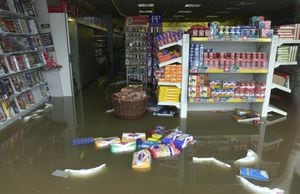
Occupants of a four-storey block of flats in Berwick Road were among those who became stranded, and many had to be evacuated. As levels had risen during the night pensioners Peggy Whitesmith and Joyce Morris were rescued by the fire service using a rubber dinghy in Longden Coleham.
Mardol Gardens shopping arcade was swamped and Victoria Quay, The Shrewsbury Hotel, King's Head pub and Watson and Thornton fabric shop were just a selection of the premises in the area hit by the floods. Getting around meant getting a punt. In Abbey Foregate there was a shuttle bus to ferry stranded shoppers across floodwaters to dry land.
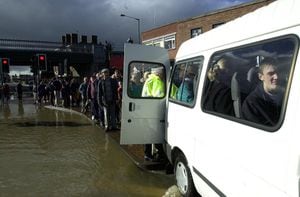
There was also the other aspect, in which people were able to do things that they would not normally be able to do.
For instance, four horsewomen took advantage of the chaos to ride down Coton Hill to reach flooded Chester Street and then splash down Smithfield Road and up Mardol to Pride Hill.
"Our horses love the water," said one of them, Daphne Preece.
And David and Stephen Evans of Wem donned their wetsuits and canoed from Coton Hill to Frankwell.
In Shrewsbury 400 properties were affected. Elsewhere huge tracts of countryside were swamped, the Wharfage at Ironbridge was covered to the tops of the riverside railings, and Bridgnorth was also severely hit as the flood surge travelled remorselessly downstream.
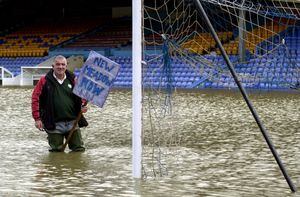
The drama was followed throughout the world by international readers of the Shropshire Star's website, which was still quite new back then. We broke our record for page views in 24 hours, with 30,949 – incidentally the figure for the Shropshire Star these days is around 200,000 a day, showing how the internet has grown.
Prime Minister Tony Blair visited on November 2, although he was only in the town for 30 minutes, met few members of the public, saw nothing of the flooded town centre from the ground, and spent much of his flying visit with officials at the emergency control room at the Shirehall. Nevertheless he brought a morale-boosting message, pledging swift moves to ensure the town got a new flood protection scheme.
Among the casualties of the floods was the Hampton Loade ferry, which sank, but happily there was no loss of human life.
There was another round of flooding in December almost as bad as the first.
So 2000 was a flood year to remember, and with the dire predictions about the consequences of global warming the question is not whether it will happen again, but when.

